When you are landscaping or trying to arrange a flower bed or bouquet, it’s important to understand colors as well as the plants you are using.
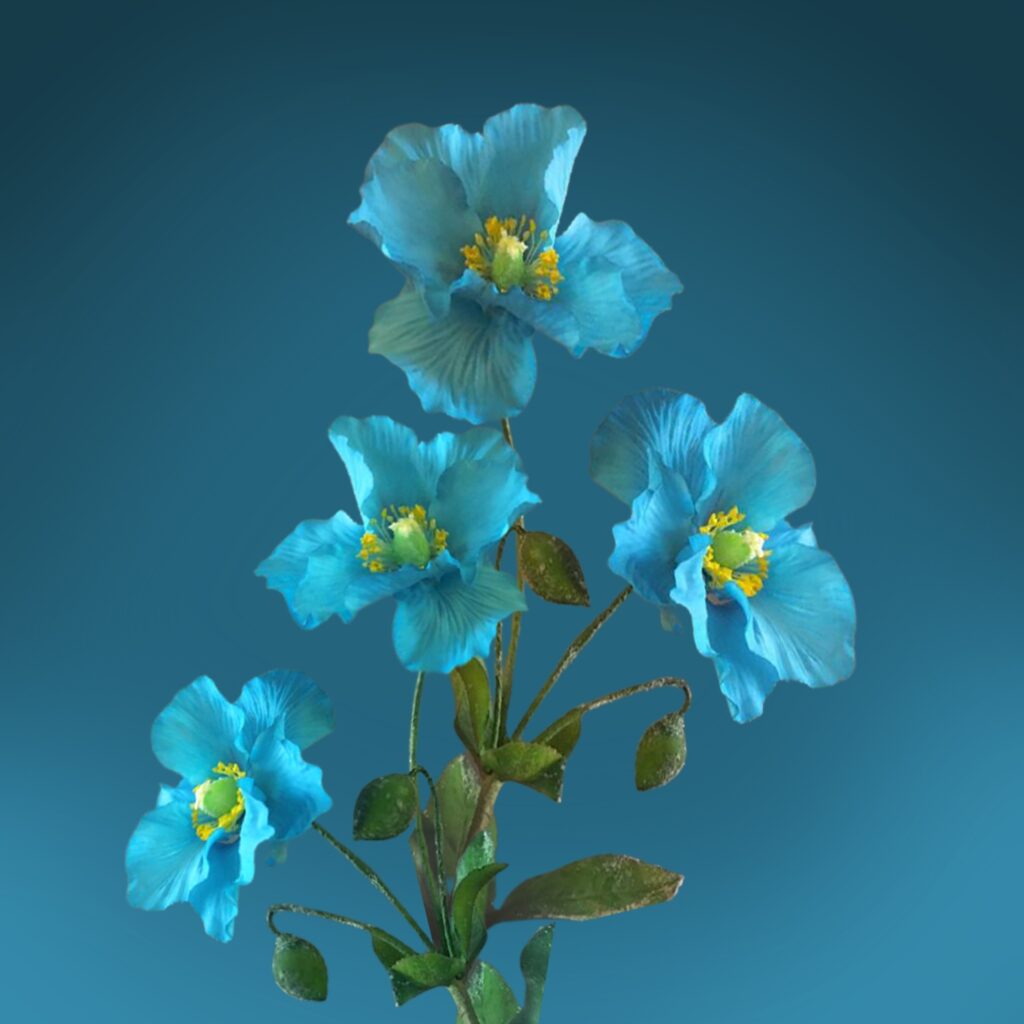
Sometimes when you are looking for something specific it can be hard to find the exact thing you are looking for but when you do it can be a truly rewarding experience.
The idea of these lists is that you may find the exact flower you are looking for and may also learn something new about plants of the way.
Turquoise is a specific color that can be hard to find in the plant kingdom. Turquoise is a shade of blue and green that is rare for these secondary shades, actually naturally occurring within nature. Some may be surprised to learn that Turquoise is actually a mineral that naturally occurs in the earth.
Perhaps even more surprising is that the color is directly based off of this mineral which exhibits the color turquoise naturally. So, if it occurs naturally in minerals then you can bet that it will be naturally present within plants too!
Let’s explore the world of turquoise flowers together, and learn about different plants along the way!
1. Delphinium ‘Blue Jay’
If you want to find a flower that exhibits a color and shows it off, you need not look any further than the Delphinium.
RELATED: 35 Delightful Flowers That Start With D (Including Pictures)
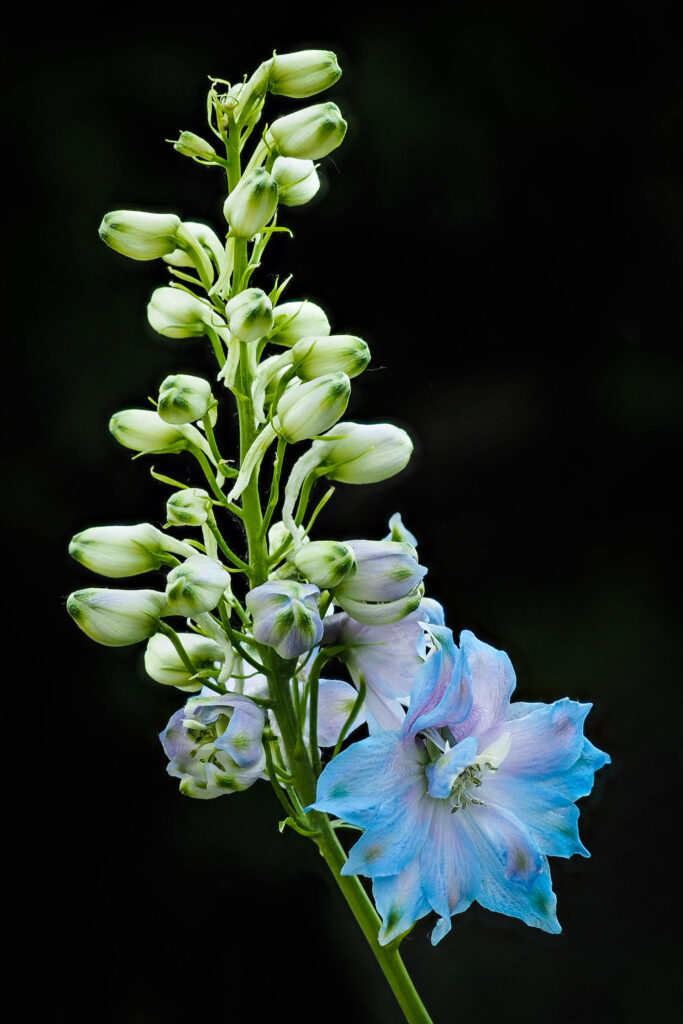
Regardless of what color you desire, the Delphinium’s long racemes with lots of flowers is the perfect showcase for any color. The double flowers are aligned up the long racemes that can get as high as 4-7ft tall.
This ‘Blue Jay’ cultivar has a particularly light blue color that is made darker by the back centre of the flower head, bees love this bit. The flowers tend to be large in this cultivar and are double petalled – they can be around 3 inches in radius.
The long spikes of blue and complemented by the Delphiniums interestingly shaped foliage that is more importantly dark green.
The combination of green and blue can really draw out the turquoise color you are seeking in your garden. Delphiniums are really versatile in their usage, common in bouquets, at the back of borders, and in their own independent beds.
2. Nigella Damascena ‘Love In A Mist’
This is a particularly unique annual plant that has some striking inflorescence that you will be able to identify forever after only one viewing. The fennel-like foliage is made up of thin bracts that cover the flower within a ‘mist’ of green foliage.
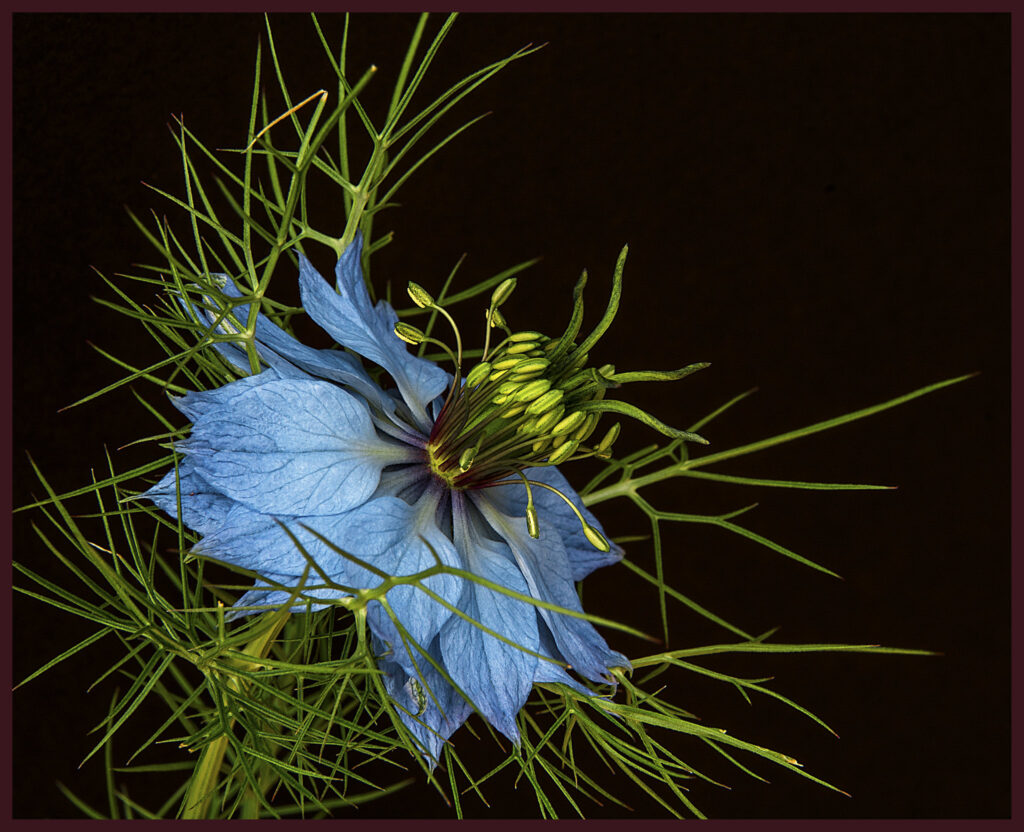
The flowers are fluffy and are particularly intriguing for any botanist or horticulturist. The double petalled flower is a light blue color, that in combination with the green centre and the green misty foliage makes for a real turquoise bloom from afar.
Plant this beauty in the spring and watch it blue into the fall. This plant can grow to around 2 feet and is perfect for summer viewing. Even better, the plant is particularly unfussy but will die out at the end of the season, creating a blank canvas for you to work with rather than digging up pesky dead roots.
3. Meconopsis Betonicifolia ‘Himalayan Blue Poppy’
This particular plant and cultivar is a little bit harder to grow than most, but the pay out is a reward that you will seek for seasons to come. As the plant grows in the Himalayan mountains it can be hard to replicate this climate and ecosphere, but the reward is an amazingly turquoise blue ‘poppy’.
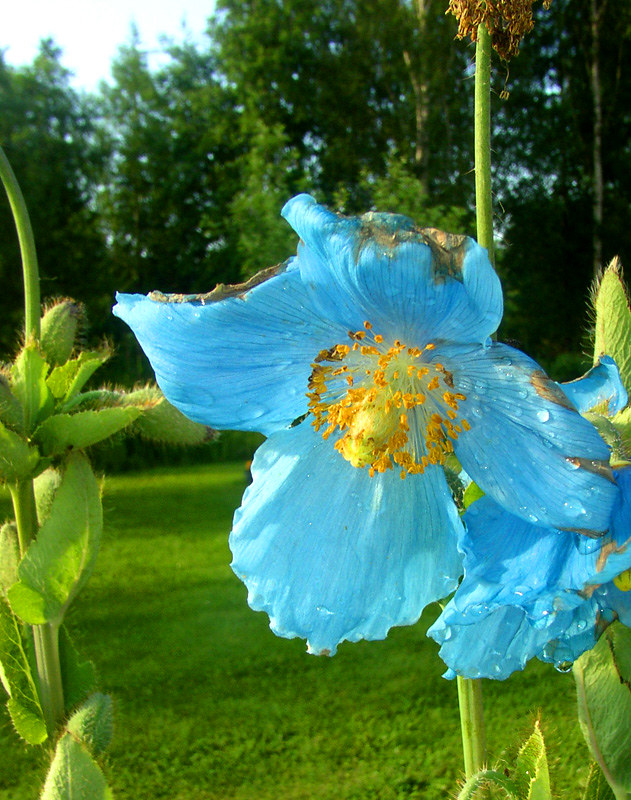
The species is particularly syndicated among gardeners and is considered to be a test of a true gardener to cultivate this particular plant.
So, if you want a test this is your plant to choose. The plant can be perennial when grown and established well, but even for a simple peek during the summer this could be the highlight of your blooming season.
In any case, this genus of Meconopsis has all the tell-tale signs of a poppy without being of the Papaver genus. One of the big differences between the Meconopsis and the Papaver is the opium containing centre of the Papaver orientalis is not exhibited in this plant at all.
Rather, a summery cluster of sun yellow stamen that is truly complimentary to the light blue petals that surround it greets us. These petals, when grown well, become a really beautiful light blue turquoise color that is just breathtaking when you get this flower to bloom naturally.
4. Hydrangea Macrophylla ‘Nikko Blue’
The Hydrangea is a popular shrub for its interesting features and inflorescence that is often in gardens throughout the world.
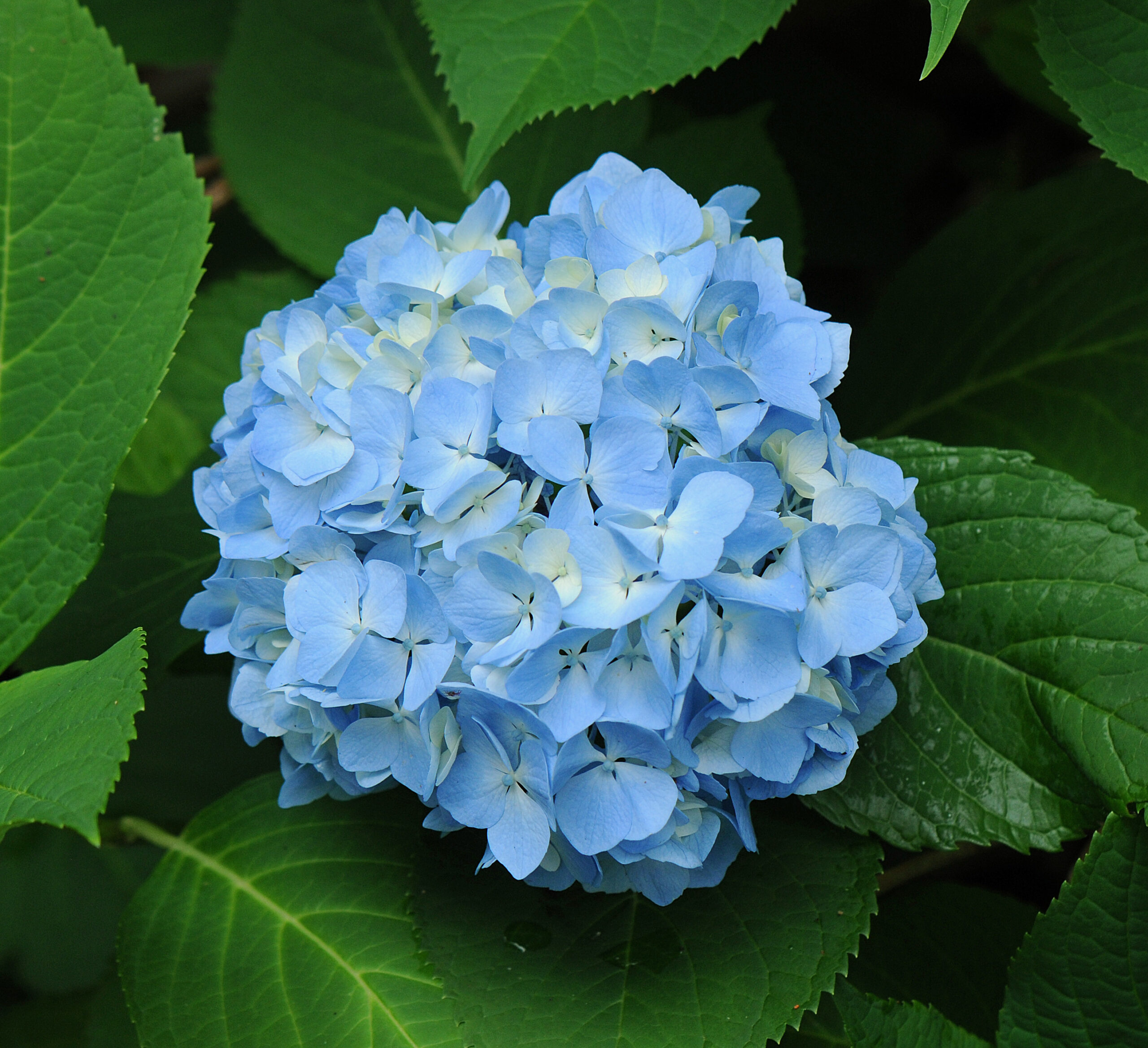
Hydrangeas can come in a huge amount of colors, and can even change their color depending on the pH level of the soil they are planted in, so be careful not to affect this color too much as it is a near perfect turquoise with the right pH level.
Hydrangea are often one long thick stem that branches out into multiple smaller stems which create a large flower head created as a cluster of small flowers. This particular cultivar ‘Nikko Blue’ is a beautiful light blue color that is stunning.
When this cultivar grows into abush it can be the show flower of any garden as it stands out greatly among its green foliage. With the right pH level in your soil you could experiment to get this flower to become a perfect shade of turquoise.
The cut flowers can look particularly beautiful in a bouquet and young versions of the shrub can be great for borders and planters.
5. Salvia Sagittata ‘Blue Butterflies’
The Salvia plant is a beautiful late blooming flowering perennial that is usually endemic to high in teh andes but has become naturalised into many climates through modern botany.
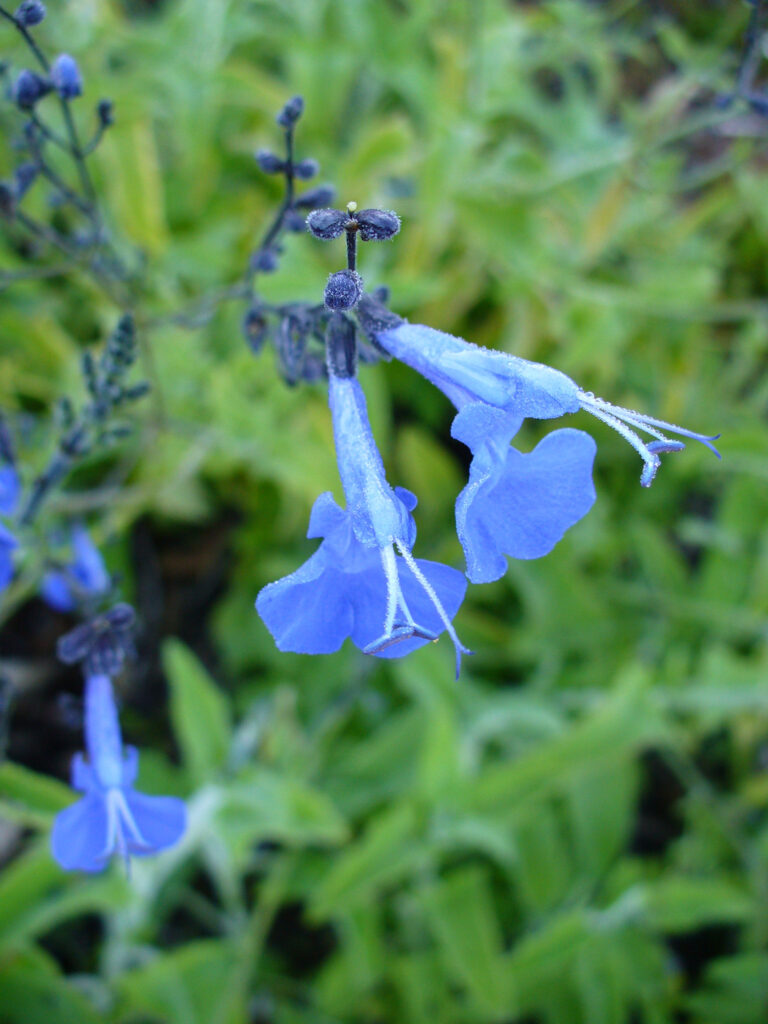
More importantly, this particular cultivar boasts some stunning blue flowers through the late summer and into the early frost periods of November if cared for properly. What’s more you get two for one as the foliage is particularly fragrant, as salvia is the genus that the herb Sage comes from.
This is a true blue plant that will flower late into the season. The flowers are small and delicate but the color can really pack a punch, with the right background this can create a turquoise effect from the petals.In full sun this plant will bloom really strongly and be great additions to any border or bed.
6. Lathyrus Odoratus X Belinensis ‘Sweet Pea Turquoise Lagoon’
I mean, if you are looking for a turquoise flower, it doesn’t get much better than this. This hardy annual plant flowers right the way through from May to October and dies back soon after.
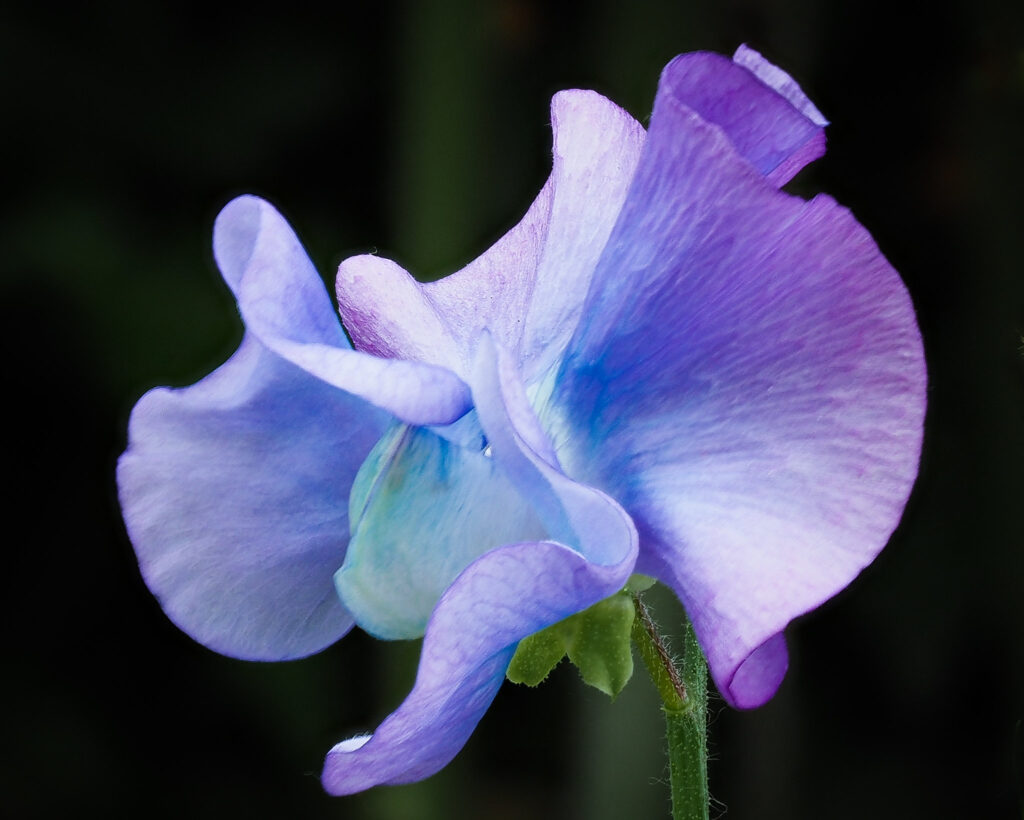
Your garden will be full of the beautiful scent of this sweet pea flower as well as the intoxicating colors of the turquoise flowers.
The plant, although part of the legume family, is actually relatively toxic if eaten, so don’t get ahead of yourself.
However, this specific cross bred cultivar is a great example of how horticulturists and botanists alike cross breed plant species in order to get colors such as turquoise. THis is across between the common odoratus and the more colorful belinensis.
In a bed, the sweet pea can rise high and add some height as well as desirable color. The sweet pea is also a favorite among flower presets. The petals are dainty and full of oil so press well.
The sweet pea usually has two petals that emerge from a thin but erect stalk. This is a great addition to any garden and could just be the turquoise flower you are looking for.
The Final Word
There you have our guide to the potential turquoise flowers you can find in the plant kingdom. There are, of course, more to explore, but these are our favorites. It doesn’t get much closer than the Turquoise lagoon of the sweet pea which has been specially bred in order to find that color.
Although others report great success in getting a turquoise color from their Hydrangea with the right balance of pH levels.
The pesky Himalayan poppy is a worthy challenge for any gardener and really makes you appreciate how patience and correct horticultural technique can be really rewarding even for the experienced gardeners.
In any case we hope that this guide has shown you the diversity of the plant kingdom and its colors. As we know that turquoise is a naturally occurring color in a mineral, we know it shouldn’t be too hard to achieve in a plant.
Moreover, we hope you learned about more than just the turquoise color, but about plants you may have never heard of before and the diversity of flowers within this plant kingdom.
We challenge you to create a flower bed of purely turquoise or blue flowers, this can really show your skill and experience as a gardener and can be your next seasonal project. All these flowers can work well together and you can have a sea of blue flowers you can gaze at all summer long.
We hope you learned something from this article, here are other articles that you can learn from:
Dahlias: Key Steps and Tips on Growing Dahlias In Pots







